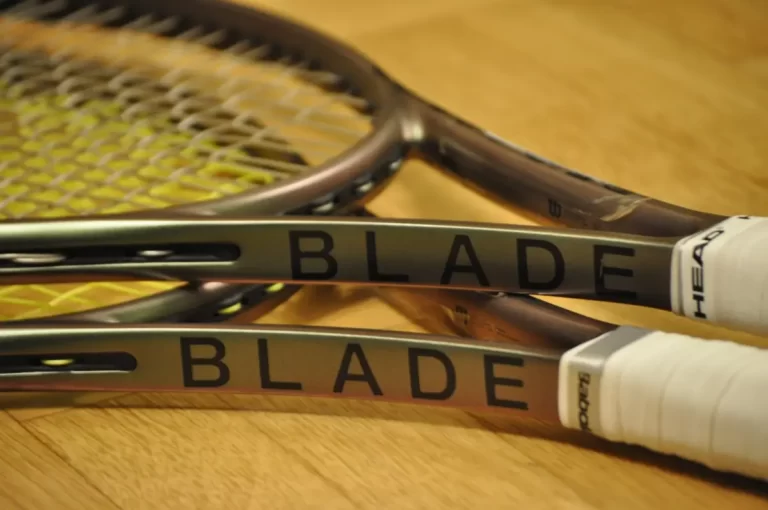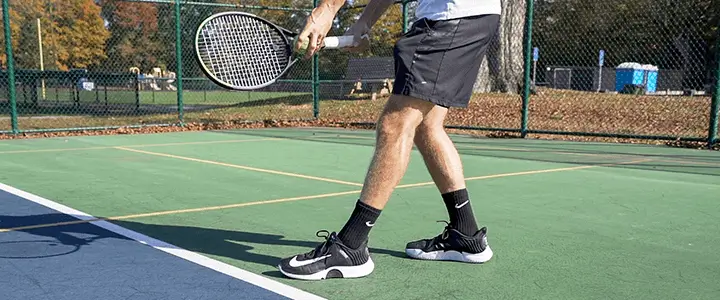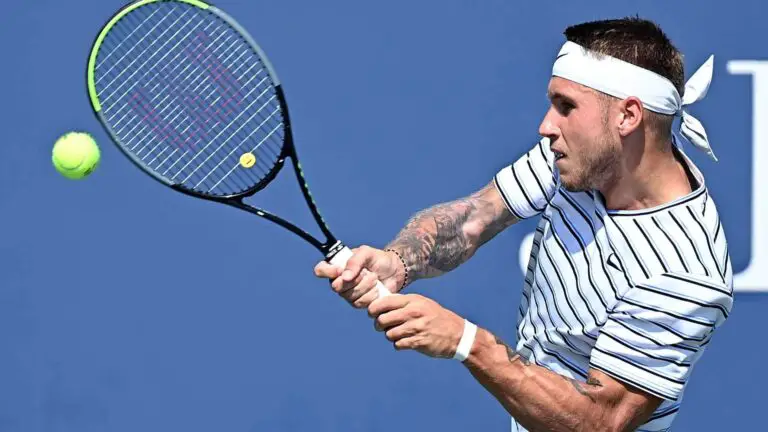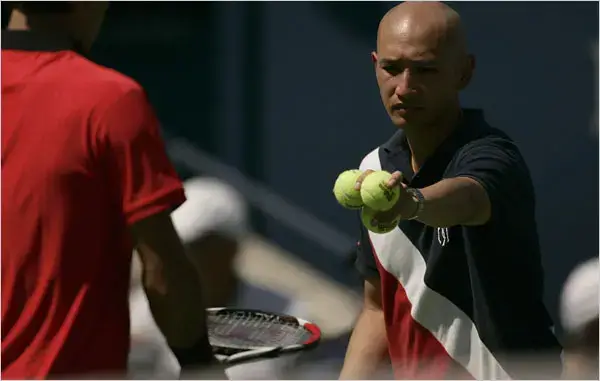Can Tennis Players Wear Gloves?
Have you ever wondered if tennis players can wear gloves on the court? You’re not alone, after all! Tennis is a sport that requires skill, talent, and a firm grip on the racket.
Since gloves may interfere with a player’s ability to wield the racket precisely, wearing them may appear contradictory.
We’ll delve into tennis gloves in this article and examine the different types available to players like you. So prepare to have all your questions answered if you’ve ever been interested in the benefits of wearing gloves or the numerous options available. Let’s dive right in and explore the tennis glove universe!
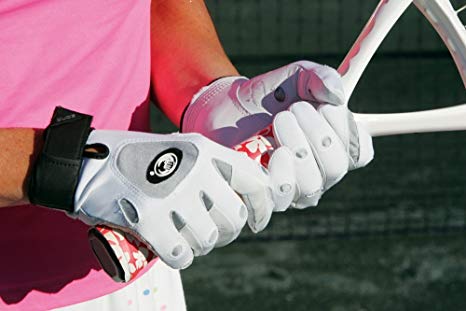
Can Professional Tennis Players Wear Gloves?
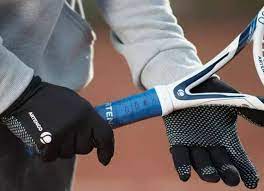
Yes, if they so want, professional tennis players can wear gloves. Professional tennis players are permitted to wear gloves, but it is not a widespread practice. It’s crucial to remember that most professional athletes choose not to wear gloves during games or practices. Professional players typically avoid gloves; I’ll explain why later in the article.
You’re not alone if you’re curious about when tennis gloves are appropriate and inappropriate. So here is the response.
Tennis gloves are typically accepted when players need extra assistance or security due to ailments or injuries of the hands. In order to keep the hands warm during cold weather, they are also acceptable.
Players should always verify the rules before wearing gloves in competitive play since it’s vital to know that particular events or governing bodies may have their own rules and regulations regarding using gloves.
Why Tennis Players Don’t Wear Gloves.

Have you ever wondered why tennis players don’t use gloves? There are a few factors that contribute to this question’s interest. Let’s delve in and find out why gloves are rarely seen on a tennis court.
- First of all, tennis is a game that calls for swift, accurate movements. Players must feel the ball and have a firm hold on the racket. Gloves can limit touch perception, which makes it more difficult to accurately control the racket. It would be difficult to thread a needle while wearing thick gloves, can you imagine?
- Another reason is that gloves may change how the game feels in general. Touch and grace are critical components in tennis. Players rely on their hands to create spin, regulate the power of their shots, and make split-second changes. Gloves can obstruct these delicate motions and disrupt a player’s rhythm.
Furthermore, gloves could not offer as much grip as bare hands. Tennis-specific gloves are made to improve grip, but they could still fall short of the friction and feel that come from the hand making direct contact with the racket. This could cause the athlete to lose control and compromise their performance on the court.
An extensive community on Quora discusses this question. Check out the link we’ve added right here, please.
Pros And Cons Of Wearing Gloves For Playing Tennis
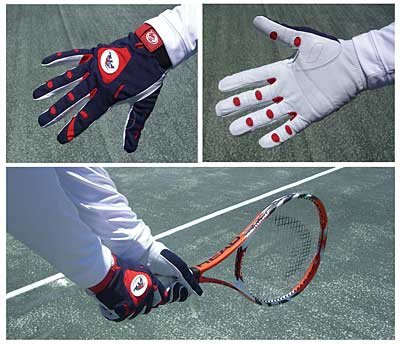
Let’s examine the benefits and drawbacks of tennis glove use. Although gloves are not frequently seen on tennis courts, there are benefits and disadvantages to consider.
Pros of Wearing Gloves
Protection
Gloves can shield the hands, especially in cases where athletes already have hand injuries or diseases. They can support and protect weak areas by providing compression, stability, or cushioning.
Cold Weather Comfort
Gloves can warm hands in colder temperatures, preserving athletes’ talent and suppleness. Tennis gloves explicitly made for cold weather can offer insulation without sacrificing grip.
Enhanced Grip
Tennis-specific gloves are made to improve grip and might be helpful for players who have trouble controlling their grip on the racket or deal with wet palms. To improve control, these gloves frequently contain unique gripping surfaces or materials.
Cons of Wearing Gloves
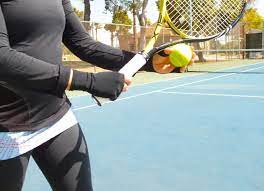
Reduced Tactile Sensation
Gloves may reduce the tactile feedback a player receives from their hand to the racket, impairing their ability to feel the ball and make accurate adjustments. This loss of sensitivity could affect the performance as a whole and shot accuracy.
Altered Feel and Control
Gloves can change how players feel and control the racket. The additional material between the hand and the racket may impede the natural touch and elegance needed to execute certain shots.
Grip Limitations
Tennis-specific gloves are designed to improve grip, although they cannot offer as much friction and contact as bare hands. Gloves may prevent players from creating spin or controlling the force of their shots.
Discomfort and Fit
A player’s performance may need to be improved by uncomfortably fitted gloves. The range of motion and general comfort of a player on the court can be significantly impacted by gloves that are too tight or impede hand movement.
Tradition and Style
Tennis has a long tradition, and players often handle the racket with their bare hands. Glove use might be viewed as deviating from the sport’s accepted norms.
For your convenience, I have left a YouTube link below to help you better visual understanding.
Types of Gloves for Tennis Players
Tennis gloves come in various styles to meet players’ unique requirements and preferences. Let’s examine the numerous glove options available to you:
1. Full-finger gloves
All fingers of the hand are covered by these gloves. They are appropriate for cold weather conditions and offer hand protection and warmth. Full-finger gloves frequently incorporate specialized grip improvements on the palm and fingers to keep control over the racket.
2. Fingerless gloves
As the name implies, fingerless gloves only cover the palm and back of the hand, exposing the fingers. They allow for improved finger dexterity and touch while providing some hand protection. When it’s not too cold outside, or players need hand support without sacrificing grip, fingerless gloves are frequently preferred.
3. Compression gloves
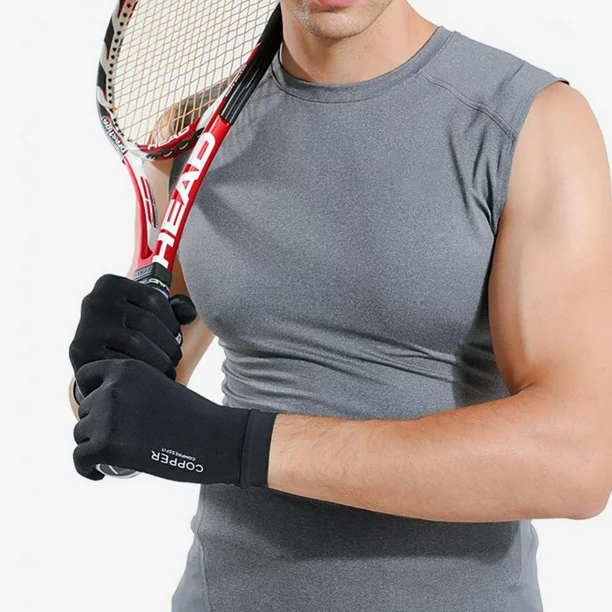
Compression gloves support the hands and improve blood flow. They are frequently used by athletes who have arthritis, hand injuries, or other ailments that call for more compression or stability. Compression gloves may have open fingertips or be fingerless to improve feel and touch.
4. Thermal gloves
The hands can stay warm in chilly weather with the help of thermal gloves. They are generally lined with insulating materials to provide warmth without compromising grip. Thermal gloves may include additional grip improvements to ensure a firm grip on the racket.
5. Finger sleeves
Individual sleeves known as “finger sleeves” only cover the fingers, leaving the rest of the hand uncovered. They are frequently used to shield particular fingers from harm, blisters, or calluses. Finger sleeves can improve comfort and grip while offering only a limited amount of support.
Important Things To Consider While Buying Tennis Gloves

There are several crucial aspects to consider when purchasing tennis gloves to make sure you make the appropriate decision. The following are the main points to remember:
Grip
Tennis requires a firm and stable grip, so look for gloves that provide that. Think about using gloves with specialized grip-enhancing features or materials that offer superb traction and control on the racket handle.
Fit and Comfort
Proper fit and comfort are crucial for best performance. Make sure the gloves are a snug fit without being constrictive. Look for comfortable gloves that allow for natural hand movement, constructed of breathable fabrics.
Durability
Tennis racquet gloves must be strong enough to handle game-related pressure. Look for sturdy buildings and materials that will hold up to repeated use and continue to work well over time.
Flexibility
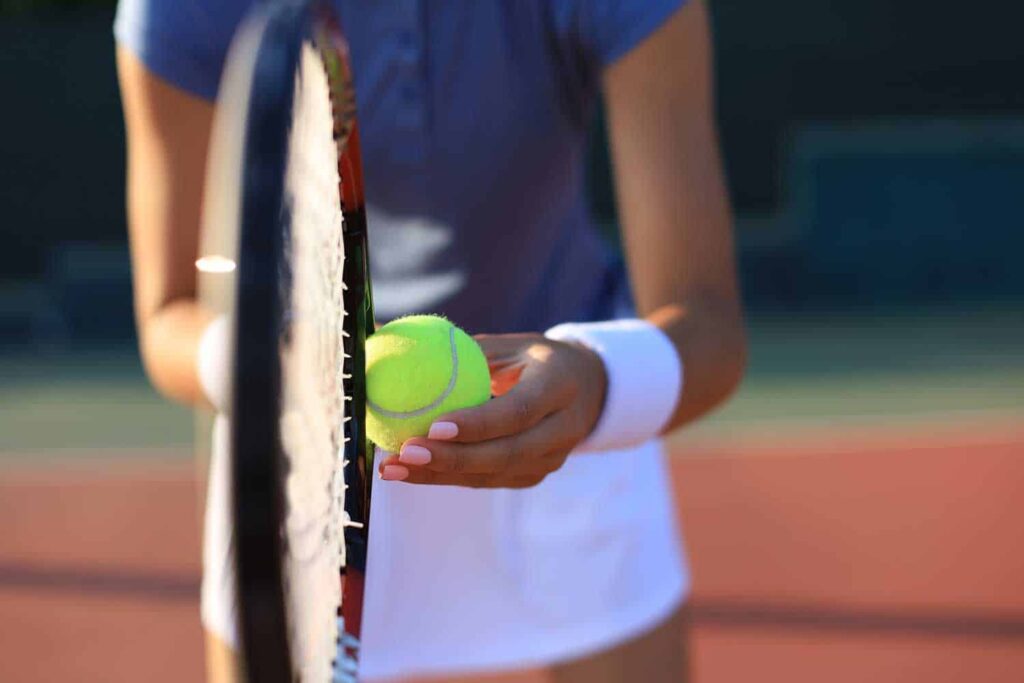
Choose gloves that allow flexibility and freedom of movement because tennis involves various hand and finger movements. They should support your ability to use multiple strokes and modifications on the court.
Weather Compatibility
Take into account the weather you’ll be playing in. Look for gloves made for a particular climate, such as thermal gloves in the cold or breathable, moisture-wicking gloves in the hot and muggy.
Protection
Choose gloves with the right features if hand injuries or conditions call for extra support or protection. Depending on the hand, this may include padding, compression zones, or targeted support.
Alternatives To Wearing Tennis Gloves
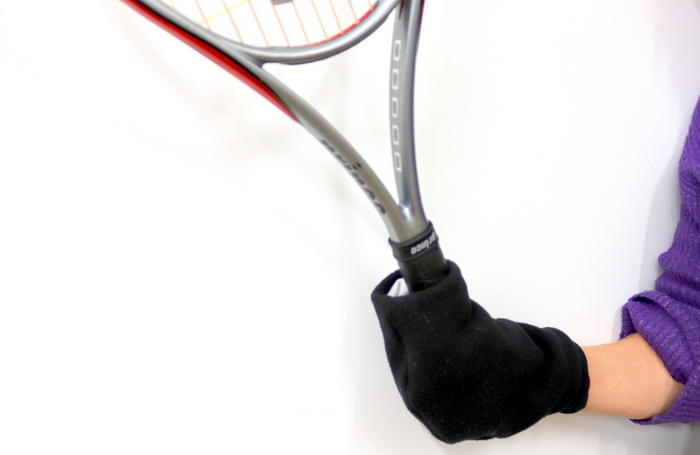
There are numerous options you might think about if you don’t like wearing tennis gloves or choose to forego them. While gloves have some advantages, these substitutes might help you get a decent grip and safeguard your hands in various ways. Here are several possibilities:
1. Overgrips
Overgrips are a well-liked substitute for gloves. You can wrap these thin, tacky grips around the handle of your racket. Overgrips increase grip traction, wick away perspiration, and feel cozy. You can keep a fresh grip on your racket by replacing them when worn out.
2. Towels or wristbands
Keeping your hands dry when playing intensely can be achieved by carrying a towel or wearing wristbands. You can keep a firm grip on the racket and avoid slipping by often cleaning your hands or using the towel to dry off.
3. Rosin bags or grip enhancers
Powdered chemicals called rosin bags or grip enhancers can be put on your hands or the handle of your racket. They strengthen grip and increase friction, especially in humid environments or if your hands are sweaty. To confirm that these substances are permitted, review the policies of the tennis organization or competition you are participating in.
Conclusion
Picking the appropriate tennis gloves is crucial for the best grip, comfort, and protection while playing the sport. You can improve your performance and enjoyment on the tennis court by considering these things and finding gloves that suit your demands. So go ahead and choose the ideal set of gloves to elevate your performance!
REFERENCES
- https://tt.tennis-warehouse.com/index.php?threads/are-tennis-gloves-allowed.100974/
- https://www.menstennisforums.com/threads/why-dont-pros-use-tennis-gloves.459225/
- https://www.quora.com/Why-dont-tennis-players-wear-gloves
- https://www.youtube.com/watch?v=x2huyI7Z7pw
- https://www.sportingbounce.com/blog/are-tennis-gloves-useful


